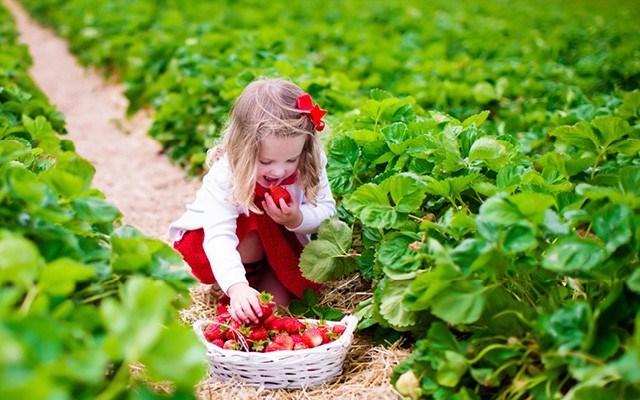Two back-to-back events this week got me thinking about winners and losers in the food world.
First was the annual BC & Yukon Community Newspaper Association bun toss at which this stellar publication and its team — along with the Question and their cousin down the highway, The Squamish Chief — swept the awards. (Yes, Whistler, in fact all of the Sea to Sky — thank your lucky stars your communities have such excellent newspaper coverage. And get out there and support it. Many don't because many don't!)
Next came a loser lunch "catered" by a fast-food joint, which shall remain anonymous to protect the guilty and because it literally could have been any one of thousands of places. The word "indifference" comes to mind: Indifferent bread. Indifferent fillings. Indifferent fruit. No, wait, the fruit was actually awful — bitter and dusted with preservatives. Topping things off: an indifferent hyper-sweet "cookie" (I use the term loosely).
Winners. Losers. Found in virtually every human endeavour, but what makes them so with regard to food and drink? And do we sometimes mistake one for the other?
BEAUTIFUL WINNERS: Good taste versus what's good for you.
Once upon a time, humans were guided toward eating what's good for us by taste alone. We are actually genetically programmed to associate bitterness with poison and sourness with rotten or spoiled food. Something along the lines of: Ick, it will make you sick.
Sweetness, in a nutshell or otherwise, meant goodness. Fresh, sweet wild berries. Fresh, sweet fish. Fresh, sweet water from a stream.
Fast forward to today, when our "tastes" have literally been transformed with new habits and food availability, and hidden sugars can mean maybe seven grams, or almost two teaspoons, of sugar or more in a serving of commercial salad dressing alone.
Here's where winners and losers can switch sides and turn things upside down.
What we've been advised to ditch for years — fat — now turns out to be a winner, at least in moderation. And sugar, which many food producers added as a palate-pleasing substitute during our low-fat crusade, has proven to be disastrous (to wit, our soaring diabetes rates). This switcheroo has also turned our tastes and eating habits around to the point where we Canucks are now consuming on average 110 grams or about 28 teaspoons of sugar a day, half of it natural, as in lactose in milk products, half of it "hidden."
Rather than offering you a catchy fact or saying that will help you or your kids align winners that taste good with the most important winner in this contest — namely that what you eat and drink is actually good for you — here are some Qs instead.
What tastes good to you, and why? Could you do some re-programming to re-align your ideas of what tastes good with what's really good for you?
You might start by paying attention to what you eat and how you feel after. That's the secret to how quinoa, which levels off our blood sugar in healthy, markedly feel-good ways, took off to become a winner in North America, leaving the people of Ecuador, where quinoa was a once mainstay, sadly in the lurch.
NOT-SO-BEAUTIFUL LOSERS: It's all in the chemistry department.
There used to be a popular saying regarding food labels: If you can't pronounce it, don't buy it.
This little rule was intended to put paid to what was once considered a big loser in our food supply: chemical additives. Not to say chemical additives are losers. In fact, let me jump to their defense. Chemicals have helped us make our food supply better and healthier, and keep it that way longer.
The problem is some previously considered winners have proven to be losers, despite the fact that lately Health Canada seems to be doing a pretty good job of keeping itself and Canadians out of the glue when it comes to additives.
To start, the jury is still out on azodicarbonamide, or ADA, which is banned in Europe. ADA, sometimes called the yoga mat chemical for its use therein, is also used to bleach flour and condition pizza and bread dough. Canadian guidelines are still murky about what levels, if any, of ADA are safe, given Health Canada's own scientists have called ADA research poor or incomplete. Meanwhile, some food suppliers like Subway and Starbucks have voluntarily dropped ADA like a hot potato.
Previously, another big chemical brouhaha occurred over bisphenol A or BPA, a known endocrine disrupter found in food containers and packaging. A polycarbonate identified by number 7 in the triangular recycling logo, BPA is used in plastic water bottles, tin can linings and more.
BPA is responsible for turning boy fish and alligators into girls, or otherwise rendering them infertile. Scientists have now discovered that the impacts can be passed along to marine animals' offspring for up to three generations.
In Europe, BPA is still permitted but clear new standards have been adopted. In Canada, BPA has been more restricted but standards aren't clear. Other than motherhood statements that BPA levels are safe for everyone, including newborns, actual numeric guidelines are tough to assess.
My advice to stay a winner: Don't buy canned goods unless they're marked "BPA-free" or any food or drink in plastic containers marked No. 7. Some would say don't use plastic containers, period. And don't heat them up. Heat and plastics don't play nicely together in any sandbox.
Glenda Bartosh is an award-winning journalist who wishes all people and newspapers a long, healthy life.




